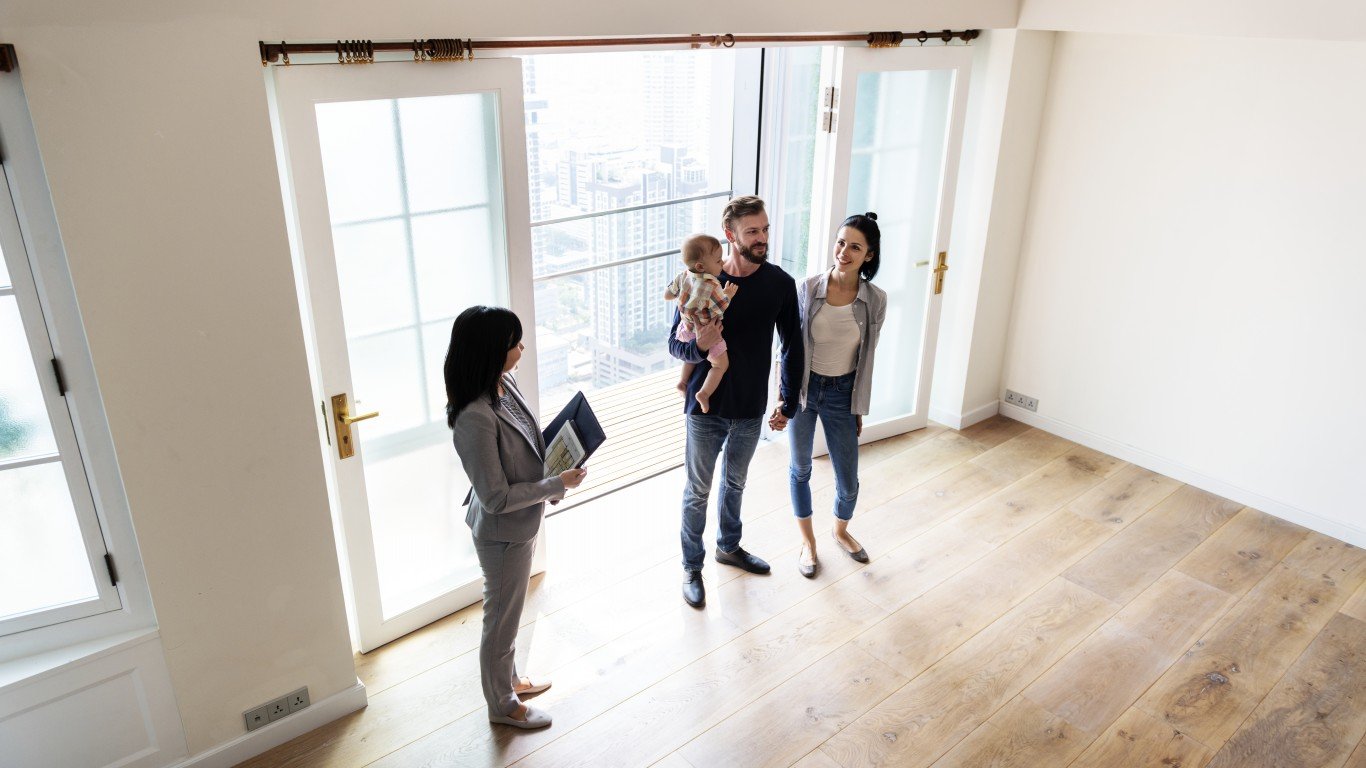For many generations of Americans, buying a home was a goal. It was a commitment to stability, a sign that you were a grown-up, a symbol of success. To many, over the decades, being able to own the place where you live was a given – almost a birthright. A survey this summer by the online lending marketplace LendingTree found that 94% of those surveyed considered owning a home part of the American Dream. But it also found that 51% of those who don’t already own said they were afraid they’d never be able to.
In 2020, according to U.S. Census Bureau data, the number of American housing units that were owner-occupied was 63.1%, the lowest rate in five decades. Since then, the rate has risen to 65.9%, so clearly some people are still able to achieve home ownership. The challenges, though, are real.
For one thing, housing prices are climbing.
The Case-Shiller U.S. National Home Price NSA Index, released on Oct. 31, showed that home-price growth rose by 2.6% in August over the previous month – and 6.4% above the January average. And mortgages are more expensive, too. In 2021, the average rate for a 30-year fixed-price mortgage was 2.96%. The rate hit 5.34% last year, and is currently at 7.08%. Housing experts predict that it will stay north of 7% for the rest of this year and probably beyond. (These are America’s 25 least affordable housing markets.)
That’s why almost three-quarters of aspiring homeowners name affordability as the main reason they’re still renting. An analysis by Realtor.com in April of this year calculated that in 45 of the 50 largest U.S. cities, renting costs less than buying a starter home.
A new study by SelfStorage.com, a self-storage comparison shopping site, determined the 10 states in which it would take renters the longest to be able to buy a place of their own. Sourcing data from the National Low Income Housing Coalition, HUDuser.gov, and Realtor.com, the site determined the median household income of renters and fair market rent costs for each state. Using the 50/30/20 rule (assuming 50% of income goes for essentials, 30% for wants, and 20% for savings), it arrived at the time it would take for a renter in each state to save enough for a 10% down payment.
Note that according to Rocket Mortgage, the minimum down payment for a conventional mortgage loan is only 3% for first-time buyers; however, this may rise significantly according to the buyer’s credit score and other factors.
To account for the varying cost of rent in each state, a separate ranking was done assuming 20% of household income after rent is saved. (These are the 10 cities where home buyers make the highest down payments.)
| Rank | State | Median Home Listing Price (2022) | Median Cost of 10% Deposit (2022) | Median Monthly Income of Renting Households | Median Income After Rent (2 bed) | Needs (50% of Income After Rent) | Wants (30% of Income After Rent) | Savings (20% of Income After Rent) | Years to Save 10% Deposit After Rent |
|---|---|---|---|---|---|---|---|---|---|
| 1 | Massachusetts | $676,000 | $67,600 | $5,093 | $2,928 | $1,464 | $878 | $586 | 9.62 |
| 2 | Montana | $613,725 | $61,373 | $3,678 | $2,676 | $1,338 | $803 | $535 | 9.56 |
| 3 | Hawaii | $848,750 | $84,875 | $5,936 | $3,761 | $1,881 | $1,128 | $752 | 9.40 |
| 4 | New York | $596,500 | $59,650 | $4,953 | $2,869 | $1,435 | $861 | $574 | 8.66 |
| 5 | Idaho | $564,900 | $56,490 | $3,890 | $2,770 | $1,385 | $831 | $554 | 8.50 |
| 6 | California | $731,250 | $73,125 | $5,858 | $3,661 | $1,831 | $1,098 | $732 | 8.32 |
| 7 | Rhode Island | $475,000 | $47,500 | $3,860 | $2,416 | $1,208 | $725 | $483 | 8.19 |
| 8 | Oregon | $549,750 | $54,975 | $4,446 | $2,901 | $1,450 | $870 | $580 | 7.90 |
| 9 | Colorado | $607,875 | $60,788 | $4,981 | $3,310 | $1,655 | $993 | $662 | 7.65 |
| 10 | Florida | $462,450 | $46,245 | $4,147 | $2,556 | $1,278 | $767 | $511 | 7.54 |
